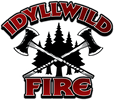Hardening Your HomeNot all homes are built the same. The materials, design and construction assembly of your home plays a large role in your home’s likelihood of withstanding a wildfire.
Considering your exposure to; Direct flames, Radiant heat, and Flying embers should be considered when doing work to “harden” your home. Direct Flames:The lack of proper Abatement and Clearances can allow flames to come in direct contact with your home and outbuildings.
Radiant Heat:Allowing for a buildup of fuels such as wood piles or flammable debris will heighten the opportunity of radiant heat to ignite flammable materials around and on your home such as flammable siding, wood decks, overhangs and covers.
Flying Embers:Without utilization of proper fire resistant materials and vents flying embers can destroy a home from up to a mile ahead of a wildfire.
We encourage you to take measures to actively reduce the likelihood of home ignition by installing /retrofitting your home with fire resistant features – “home hardening”. |
Below is a list and suggestions for hardening your home
Roofs:Roofs are extremely vulnerable to wildfire ignition. Class A roofing is highly recommended. Pay special attention to any interfaces between horizontal and vertical interfaces (juncture between roof and exterior walls) and consider utilizing non-combustible flashings in locations where ember collection is likely.
Vents:Vents: attic, soffit, roof, gable crawl space and all other vents should be screened with 1/8″ metal screening.
Windows and Window Frames:windows are particularly vulnerable to the extreme heats that are posed by nearby fire. When windows break, homes are exposed to extreme wildfire hazards. Double-paned windows have become a standard of modern construction, utilizing tempered glass panes has become an added recommendation. In addition, the frames of the windows are another factor to consider. Window frames should be composed of a non-combustible material or, if not possible, incorporate a metal sub-frame to help the window frame retain its shape when exposed to increased heat.
Exterior Walls / Siding / Eaves / Soffits:Utilize non-combustible materials such as fiber-cement board, stucco, masonry/brick, or stone. Heavy timber construction is another ignition resistant material. Remember that while these materials are resistant to ignition, they need to be assembled in such a manner that there is no exposure (heat or embers) to combustible materials that may lie behind these materials. Gaps can expose combustible sheathing and other combustible materials, which are extremely vulnerable to ignition.
Decks:Decks are extremely vulnerable considerations of home ignition. Our beautiful climate makes decks a great feature to enjoy the outdoors. There are several different deck styles, designs and materials to choose from, we recommend that your decking surface NOT be composed of wood except for its large structural components. No combustible materials should be growing or stored underneath your deck (regardless of decking material). Decks should also be closed off to the ground surface level so that embers and direct flame or radiant heat are not able to heat or ignite the deck from below.
Chimneys:Any chimney that serves a fireplace or other heating appliance should have an approved spark arrester installed. Spark arresters will serve to reduce the chance of a spark from your home escaping and possibly starting the outside of your home on fire.
Home Perimeter:The area immediately adjacent to your home, outbuildings and/or decks should be developed into a hardened/defendable zone. Home perimeter hardened zones can be developed by using a layer of weed fabric on the soil surface which is then covered in D.G. Sand or Rock. Regardless of the design, the hardened zone should contain zero combustible materials (no wood-based mulch!) and should extend out at least thirty (30’) feet from your home, outbuildings or deck(s).
Extended Home Perimeter:Any material that is combustible and is near your home allows for wildfire vulnerability. All combustible materials that are within 30 feet of your home should be removed from this area (especially during the wildfire season). Examples of near home non-vegetative combustibles include: decorative wreaths\ displays, patio furniture, firewood, propane tanks (home & grill), playground equipment, other sheds structures and outbuildings. Vegetation near the home is also critical and should be considered when developing, enhancing or maintaining your defensible space.
Idyllwild is a beautiful place to live. Our Community is surrounded by the serene San Bernardino National Forest. For those of us living in “wildland urban interface areas,” this opportunity does not come without risk.
Our Southern California Climate places us in a year-round state of Fire Season and increases our exposure to an ever-growing number of wildfires. You are our partner as we are constantly on heightened alert for the threat of wildfires. The Idyllwild Fire Protection District, along with our partnering agencies, stand ready to respond quickly to contain wildfires, utilizing your firefighting resources to protect you, your family and your property from wildfire.
|



